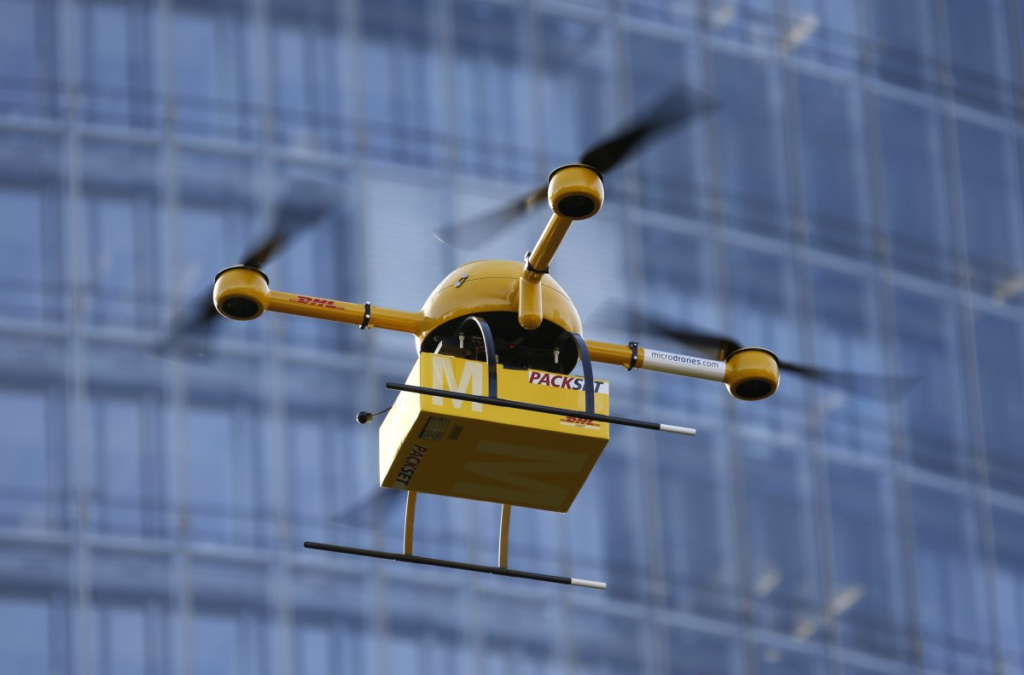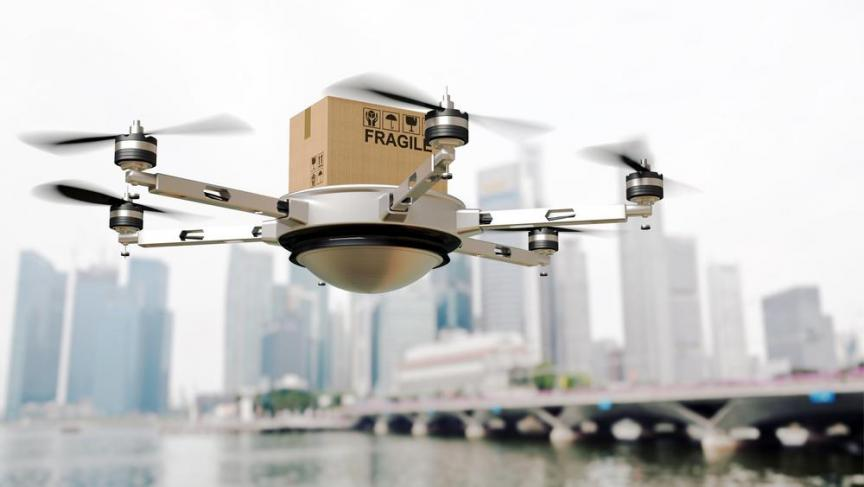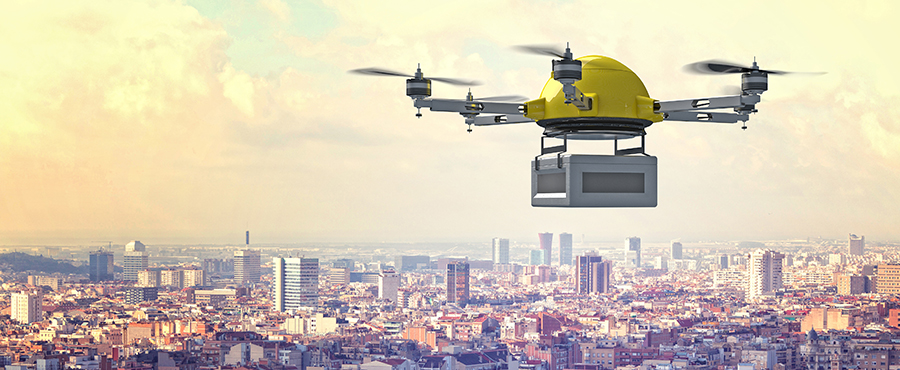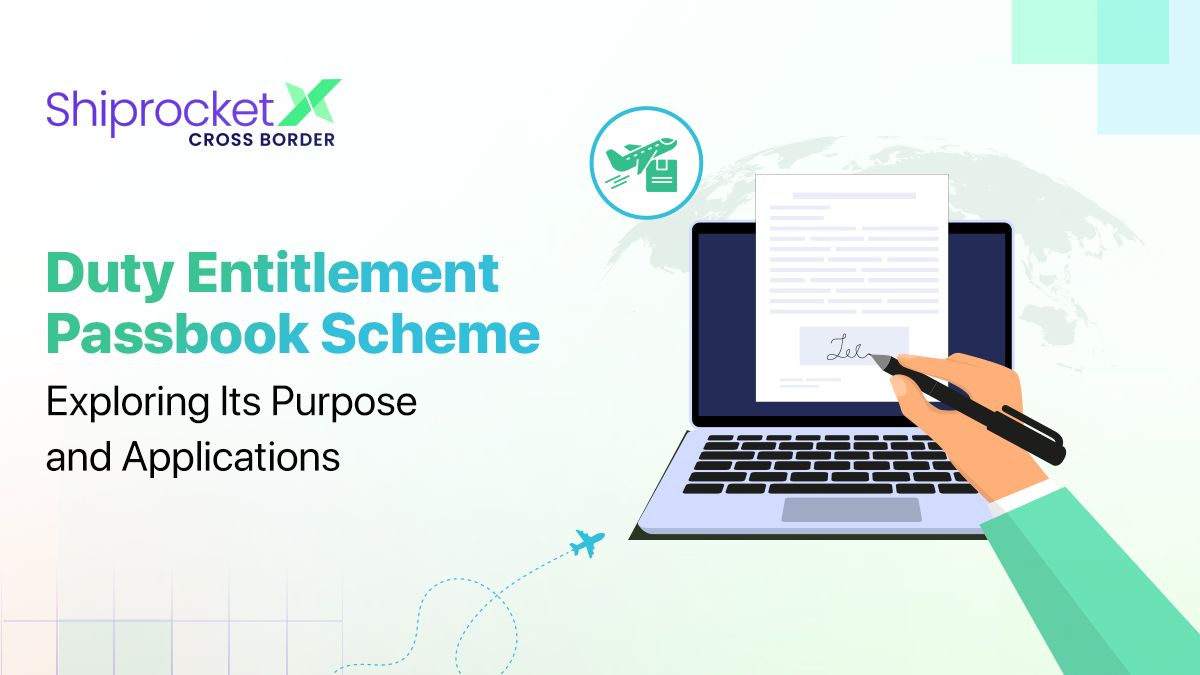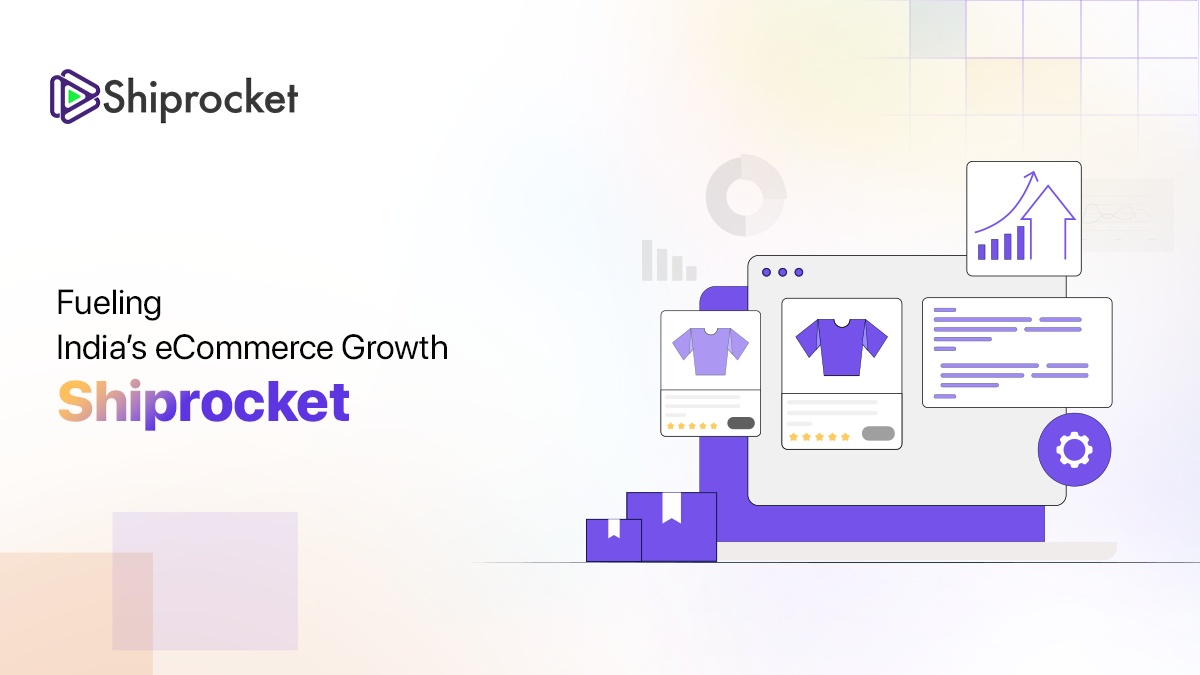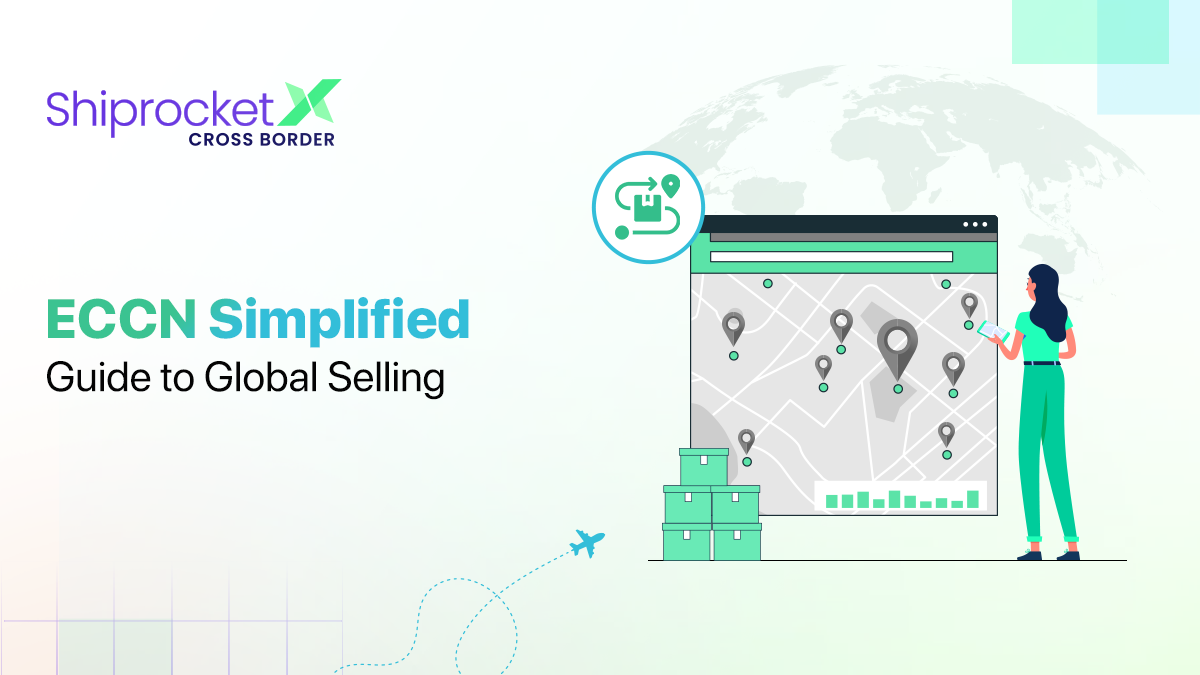Drone Delivery – An Evolution in the field of Logistics Management
- How Does Drone Delivery Work?
- Drone Delivery Evolution: What Does the Future Look Like?
- What are the Uses of Drone Deliveries?
- The Benefits of Drones
- The Current Concerns of Drone Delivery
- Adoption of Drones in the Retail and Logistics Industries
- What are the Support Services Required for Drone Deliveries?
- Conclusion
Not more than a year ago, Audi came up with a parody of transport drones in its uber-creative Suva commercial! The ad-commercial goes on to show the “drone attack” where the drones were dropping off the shipping materials over the cars and were sensing the presence of people around them. If we shed off the parody part of the commercial, mainly, these drones in the video advertisement were self-intuitive, i.e., were pre-programmed to function in a certain way and were also capable of self-direction themselves! It made the audience curious to think about the possibility of the incorporation of such futuristic gadgets to ease the delivery system! Let’s find out more about these gadgets –
With the recent popularisation of the online marketing trend and the rise of eCommerce, logistics has also gained momentum. In the past few years, we have seen multiple evolutions in the field of logistics. Drone delivery is the next big leap in the area. 2025 will be the year of transport drones; however, fret not, it will not be as intimidating as the Audi commercial. Instead, these Unmanned Aerial Vehicles (UAVs) or drones will be employed in the logistics industry to make shipping more hassle-free, convenient, and quick!
These unmanned aerial vehicles (UAVs) or mini helicopters are indeed an evolution in the logistics industry. Recently, Amazon, one of the largest retailers of the world, attempted to put drones into use. They incorporated these aerial vehicles as a part of their logistics plan. Over the past several years, they have been developing an eight-rotor Octocopter. While the project is still in the infant stage, the retailer has confessed that the action plan has already reached its 6th generation testing phase, while the 7th and 8th are cropping up too. Drones will inevitably increase the magnanimous efficiency level and will also escalate growth.
How Does Drone Delivery Work?
The drone delivery process starts when a customer places an order. When an order is received, it is processed and packed. After this process is completed, it is then loaded onto the drone. The drone is then sent to the drop-off point. When it reaches the designated drop-off point, the parcel is lowered to the ground. Lastly, the drone is returned to its home base.
Let us consider an example. A drone delivery company – PQR – serves a town in India. Customers can download the application launched by PQR and place an order with the company’s delivery partners. The order is then received and bagged. It is then loaded on the drone by a partner of the company. A self-check is conducted by the drone.
Before taking off, the customers will be asked to drop a pin that depicts the GPS coordinates of a safe drop-off point. This is validated through Artificial Intelligence (AI) and computer vision. The drone then hovers 150 to 200 feet above the location pinned and a LIDAR safety check is conducted.
During drop-off, the drone is lowered to 60 feet and another safety check is conducted. Then, it is lowered to a height of 6 inches and the order is placed on the ground.
Drone Delivery Evolution: What Does the Future Look Like?
The future of drone deliveries is promising and transformative, driven by advancements in technology, regulations, and market demand.
- Enhanced Technology and Capabilities
Future drones will be equipped with improved payload capacities and longer flight ranges. It will enable drones to carry heavier items and travel greater distances, making them suitable for delivering a wider variety of goods, including larger electronics and appliances. Solar-powered and enhanced battery technologies will further extend their operational range, allowing access to remote and rural areas that traditional delivery methods struggle to reach.
- Urban Air Mobility
Urban air mobility (UAM) initiatives will play a crucial role in integrating drones into city environments. Dedicated air corridors will facilitate efficient and safe deliveries in densely populated areas, reducing traffic congestion and speeding up last-mile delivery times. This transformation will significantly enhance delivery efficiency and customer satisfaction in urban settings.
- Cost and Environmental Benefits
Drone deliveries are poised to become cost-competitive with traditional delivery methods. As technology and regulations evolve, the cost per delivery is expected to decrease significantly. For instance, regulatory changes that allow a single operator to manage multiple drones simultaneously will drive down labour costs. Additionally, drones produce fewer CO₂ emissions compared to gasoline-powered vehicles, contributing to more sustainable delivery practices.
- Expanding Use Cases
While early drone delivery applications have focused on high-value and urgent items like medical supplies, the scope is broadening. Companies are exploring drone deliveries for retail products, food, and everyday items. Notable examples include Amazon Prime Air, Walmart, and Zipline, each pushing the boundaries of what drones can deliver and where they can operate.
- Regulatory and Security Considerations
The path to widespread drone delivery adoption is challenging. Regulatory frameworks need to adapt to ensure the safe and legal operation of drones. Security concerns, such as theft and interference, must also be addressed with robust measures. Companies are actively working on these fronts, developing sophisticated systems to secure both drones and their cargo.
- Strategic Integration
For businesses, integrating drone delivery into existing logistics models will require strategic planning. Questions around product feasibility, customer receptiveness, and necessary infrastructure modifications must be considered. As more businesses develop their drone strategies, they must balance operational challenges with the potential benefits of faster, more efficient deliveries.
What are the Uses of Drone Deliveries?
Today, technology is rapidly developing and the research in drone-based delivery systems has also developed significantly. Here are some of the methods in which drone delivery has been implemented in different industries:
- Fulfillment
Drones can be used for delivery purposes within a large storage or fulfillment center. It can be used to assist with picking and packing tasks for different consumer orders. They can work independently to improve the overall efficiency of order completion.
- Food deliveries
Some retailers and cloud kitchen delivery services have also explored the use of drones to deliver groceries, stationery, and food. The drones are equipped with special compartments and holding capabilities to keep food items secure during transportation.
- Last-mile deliveries
Drones can also be deployed to deliver parcels from local distribution centers to the consumer’s doorstep. Drones are generally used for small and medium-sized parcel deliveries over short distances.
- Remote locations
Rural and remote locations that are not accessible through conventional methods like rail and road can be accessed through drones. It is extremely crucial in such areas, especially in the healthcare world.
- Contactless delivery
After the COVID-19 pandemic, contactless deliveries are extremely necessary. Drone delivery techniques are perfect to meet this criteria. They enable delivery of food, grocery, and healthcare products without any form of physical contact.
- Urgent delivery
Drones are extremely well equipped with defibrillators, medical supplies, and emergency equipment that can be employed during emergencies. Delivery personnel can easily reach areas of accidents to provide immediate assistance.
- eCommerce deliveries
Drones can be a major blessing for eCommerce companies to provide quick and same-day delivery services. They can also be used within a storage or fulfillment facility to streamline and make internal processes more efficient.
- Medical supplies
Finding a quick and efficient solution to deliver medical supplies to patients and accident sites can be done through drone deliveries. There is significant research that is being conducted in this area to make this a fitting solution to the problem.
The Benefits of Drones
- Quick deliveries
Drone deliveries are quicker and more efficient when compared with conventional delivery methods. For retailers and e-commerce companies to meet the growing demand and provide quicker order fulfillment, drones can be the perfect solution.
- Increased efficiency
Drones can work as independent entities. They are not subjected to traffic congestion or any other logistical challenges. Hence, the efficiency provided by these can largely minimise the time taken to deliver these parcels.
- Cost savings
The initial investments in drone delivery technologies can be substantial. However, over time, retailers and e-commerce businesses can save largely on delivery and logistics costs by minimising the need for human delivery. Drones can also function around the clock without the need for breaks or rest periods.
- Increased accessibility
Drones can also reach inaccessible areas with challenging terrain. They can also survive harsh conditions when compared to traditional vehicles and delivery methods. Hence, they open up more markets and increase demand.
- Reduced environmental impact
Drone delivery can be more eco-friendly when you compare it to traditional methods of delivery. They also do not use fossil fuels; thereby, minimising the release of exhausts in the environment. They are a greener option and enable companies to meet their sustainability goals.
- Brand differentiation & versatility
Retailers can adopt drone delivery systems and distinguish themselves from their competitors to show their target audiences that they are a progressive brand. It also enhances their brand shopping experiences. Drone delivery is also extremely versatile and can be used in different applications.
- Improved customer experience
Quicker and more efficient deliveries create a better customer experience. Retailers can meet consumer demand and also increase their consumer loyalty rate through their efficient drone delivery services.
The Current Concerns of Drone Delivery
There are several concerns in plying the drones in the air, some of which are listed below:
- Financial Outlay
Though the drone delivery system would be much more cost-efficient, convenient, and hassle-free, the manufacturing of these devices would still be a cost-intensive operation. Air drones must be robust and accurately engineered to be able to sustain and function in all types of critical conditions.
- Privacy Concerns & Security Issues
Privacy is one of the major concerns faced by companies opting to incorporate air drones for all the right reasons! Hence, it is essential to frame stringent guidelines to govern the use of UAVs.
Drones are also not fully secure. They are largely prone to hacking and other types of security risks. Malicious hackers can take control of the drones and use them unethically.
- Weight of the Shipment
The weight of the shipment should not be more than a predetermined value to ensure the safety of the people and its proper functioning!
- The Air Traffic
With the coming up of air drones, naturally, air traffic is bound to increase in the years to come. Hence, regulations and strict guidelines are necessary beforehand to avoid a crisis at a later stage.
- The Flying Height of Drones
Drones are not allowed to fly above 400m. So, in a city that has skyscrapers or an area covered by forest, the drones will not be functional, or they need to be configured according to these norms.
- Loss of jobs
Deliverymen can lose their jobs with the introduction of automated deliveries via drones. Once the entire process is automated, job prospects will be reduced even more as drones will be able to function independently. Thus, it can significantly increase the rates of unemployment.
- Public acceptance
Not everyone is okay with the presence of drones in the skies and their neighbourhood as it can be a tad intrusive. The public’s perception and acceptance can be mixed and can interfere with drone delivery initiatives.
- Limited autonomy
Drone technology is still nascent. They still need human intervention. The taking off, landing, and decision-making in complicated situations can be challenging. They still need large developments in the industry to become completely autonomous.
Adoption of Drones in the Retail and Logistics Industries
Logistics and retail industries have invested largely in drone technology to leverage its merits to expand and grow their businesses. They present a scalable delivery model. UPS, Amazon, DHL, and Walmart are some companies that have already deployed drone services in their workflows. The countries that have accelerated the adoption of the drone delivery method include:
- Asian countries namely India, China and Japan
- African nations like Ghana and Rwanda
- Southern continents like Australia
- Parts of the European nations like Switzerland and Iceland
- America and Canada
What are the Support Services Required for Drone Deliveries?
Here are the different support services that are needed by drone deliveries:
- Navigation management and obstacle detection are areas that need support from experts. Integrated air traffic management through artificial intelligence and machine learning needs to be researched further.
- Marketing campaigns, research, and analytics are needed to understand how the drone delivery system is performing.
- Training and hiring to enhance the knowledge of the operating personnel.
- Mapping of geospatial parameters and curation.
- Order management, contract management, and consumer support.
Conclusion
Drone Delivery is indeed a big leap in the field of logistics, but as excited as we forget our parcels are delivered by air drones, it still has a long way to go! If we talk about a developing country like India, where the roads and traffic are not organised, unmanned air vehicles could prove to be disastrous if not programmed well! Further, air traffic, cybersecurity, hacking, delivery costs, and other concerns should also be considered.


